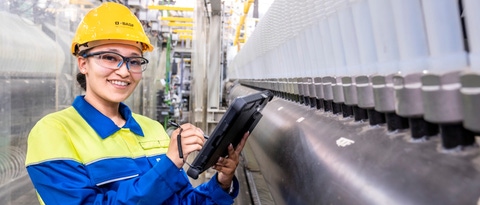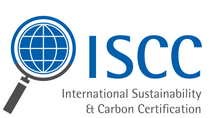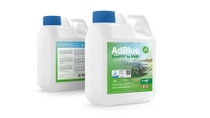Monomers
Renewable Ammonia
Renewable Anhydrous Ammonia
Renewable Ammonia Solution 24.5%
✓ Minimizes Scope 3 emissions as well as the product carbon footprint of your products
✓ PCF close to zero
✓ 100% of ISCC+ certified renewable-energy-derived hydrogen has been used to replace fossil hydrogen as raw material for manufacturing of these products
✓ Mass balance approach certified according to well accepted standard ISCC+
✓ Available as a bulk product and in all standard transport modes
✓ Drop-in solution for our customers: identical quality and properties
From fossil to renewable hydrogen and …

Certified renewable raw materials replace fossil resources at beginning of production process
BASF applies a biomass balance approach to replace fossil hydrogen in the production process with certified renewable-energy-derived hydrogen as raw material which is attributed to the product.
The mass balanced products are certified according to ISCC (International Sustainability and Carbon Certification) PLUS standards.
… to renewable energy

Renewable electricity used to further reduce production-related emissions
In addition, BASF is using electricity from renewable sources for the manufacturing of the ammonia products, further reducing their production-related emissions.
These measures reduce the product carbon footprint (PCF) of these products close to zero without compromising on quality and performance.
* Based on the average CO2 footprints stated in the “Default values for the transitional period for CBAM between October 1, 2023 and December 31, 2025” published by the European Commission on Dec 22, 2023.





